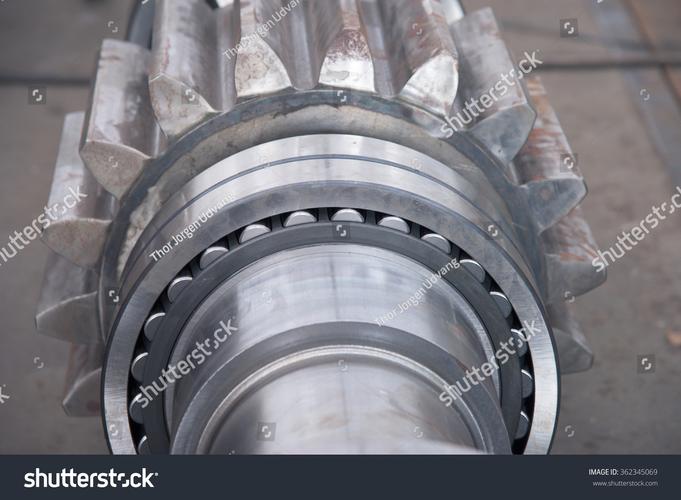Industrial Roller Bearings: A Comprehensive Guide to Types, Maintenance, and Applications
Industrial roller bearings are critical components in machinery, designed to reduce friction between moving parts and support radial or axial loads. They are widely used in manufacturing, automotive, and heavy industries due to their durability and ability to handle high-capacity operations. This guide explores key aspects of industrial roller bearings to help you optimize performance and extend equipment lifespan.
Table of Contents
1. types of industrial roller bearings2. how to maintain industrial roller bearings
3. industrial roller bearings applications
4. choosing the right industrial roller bearings
5. industrial roller bearings vs ball bearings
1. Types of Industrial Roller Bearings

Industrial roller bearings come in various designs to meet specific operational needs. Cylindrical roller bearings excel in high radial load capacities, while tapered roller bearings handle combined radial and axial loads. Spherical roller bearings are ideal for misalignment compensation, and needle roller bearings offer compact solutions for limited spaces. Each type has unique advantages, making proper selection crucial for machinery efficiency. For instance, cylindrical bearings are common in electric motors, whereas tapered variants dominate automotive wheel hubs. Understanding these differences ensures optimal performance and reduces premature wear.
2. How to Maintain Industrial Roller Bearings
Regular maintenance is vital for extending the lifespan of industrial roller bearings. Start with proper lubrication using manufacturer-recommended greases to minimize friction and heat. Monitor vibration levels and temperature fluctuations, as abnormal readings may indicate misalignment or contamination. Implement routine inspections for signs of pitting, corrosion, or cage damage. Cleaning bearings with solvent baths and ultrasonic methods removes debris without disassembly. Always follow load capacity guidelines to avoid overloading, and store spare bearings in dry, temperature-controlled environments. Proactive maintenance reduces downtime and repair costs by up to 30%.
3. Industrial Roller Bearings Applications
Industrial roller bearings are integral to sectors like mining, energy, and aerospace. In conveyor systems, spherical roller bearings handle heavy loads and shock vibrations. Wind turbines rely on tapered bearings for rotor shaft support, while cylindrical bearings drive precision in CNC machines. The food industry uses stainless steel variants to resist corrosion from washdowns. Recent advancements include hybrid ceramic bearings for high-speed applications in robotics. Case studies show that selecting application-specific bearings can improve machinery uptime by 25% and reduce energy consumption by 15%.
4. Choosing the Right Industrial Roller Bearings
Selecting the appropriate roller bearings involves analyzing load types, speeds, and environmental conditions. Radial-dominant loads suit cylindrical bearings, whereas combined loads demand tapered designs. High-speed applications benefit from needle bearings with low friction coefficients. Consider operating temperatures: polymer cages work well under 120°C, while steel cages endure higher heat. For corrosive environments, opt for coatings like zinc-nickel or PTFE. Always verify ISO certification and supplier reliability. A well-chosen bearing reduces maintenance frequency by 40% and enhances operational safety, as demonstrated in recent manufacturing audits.
5. Industrial Roller Bearings vs Ball Bearings
While both reduce friction, roller bearings and ball bearings serve distinct purposes. Roller bearings distribute loads over larger surface areas, making them superior for heavy radial loads (e.g., gearboxes). Ball bearings, with point contact, excel in high-speed, low-load scenarios (e.g., electric fans). Roller variants tolerate misalignment better but require more precise installation. Cost-wise, ball bearings are cheaper for light-duty applications, but roller bearings offer long-term savings in heavy industries. Hybrid solutions, like angular contact ball bearings, bridge some gaps but prioritize consulting engineers for critical systems.
Understanding the nuances of industrial roller bearings—from maintenance to type selection—can drastically improve your machinery's performance. Whether you're tackling high-load scenarios in mining or precision tasks in robotics, this guide equips you with actionable insights. Dive deeper into each section to optimize bearing life, reduce operational costs, and stay ahead in industrial efficiency.
In summary, industrial roller bearings are indispensable for modern machinery, offering tailored solutions across industries. By prioritizing proper selection, maintenance, and application-specific strategies, businesses can achieve higher productivity and cost-efficiency. Bookmark this guide as your go-to resource for mastering roller bearing best practices.




 13869596835
13869596835